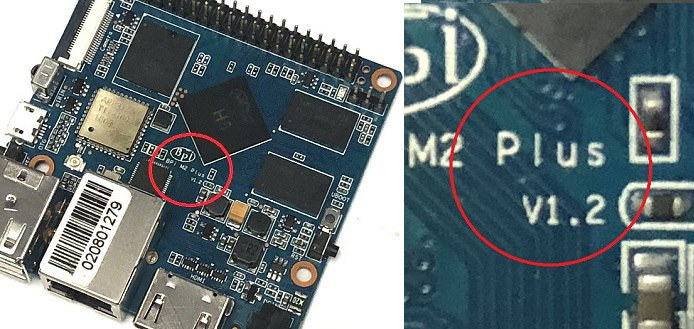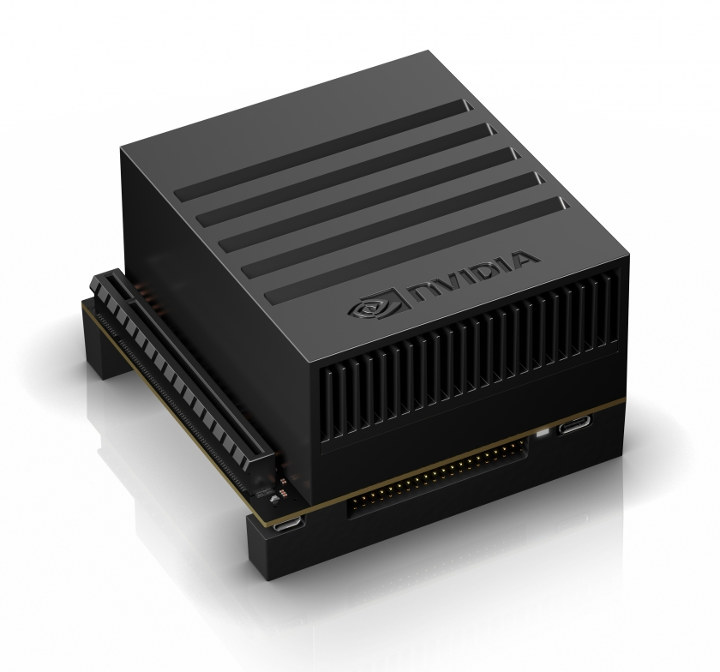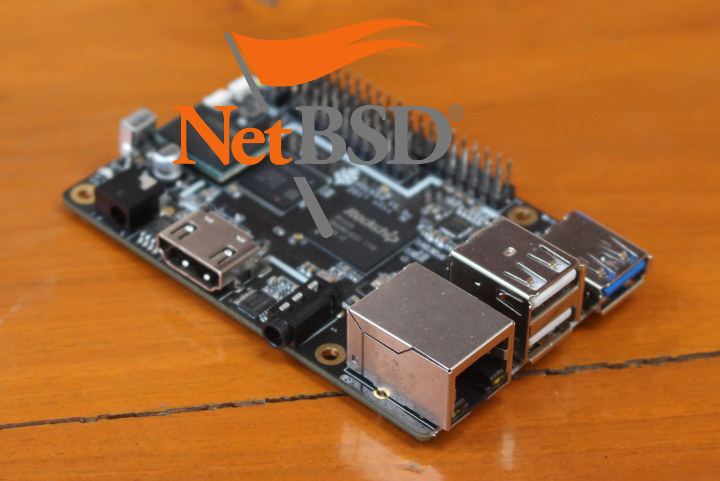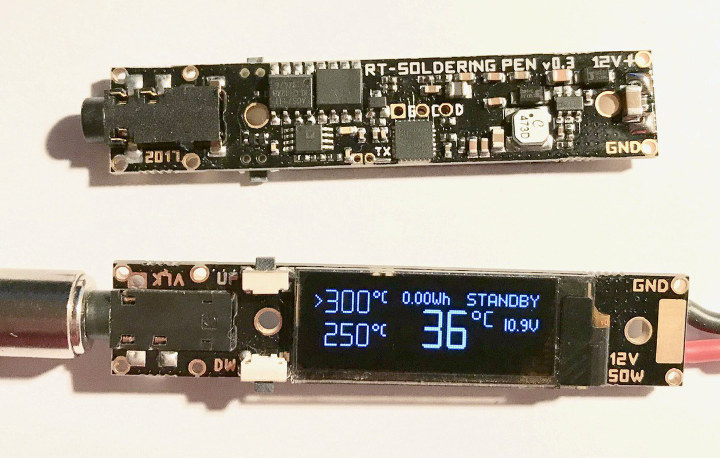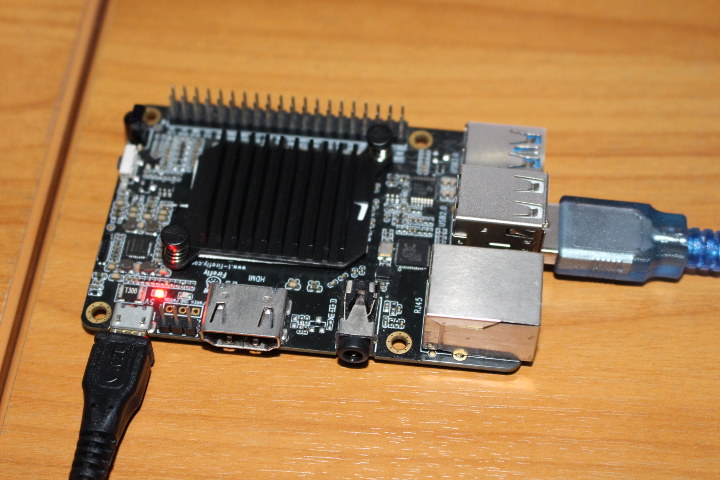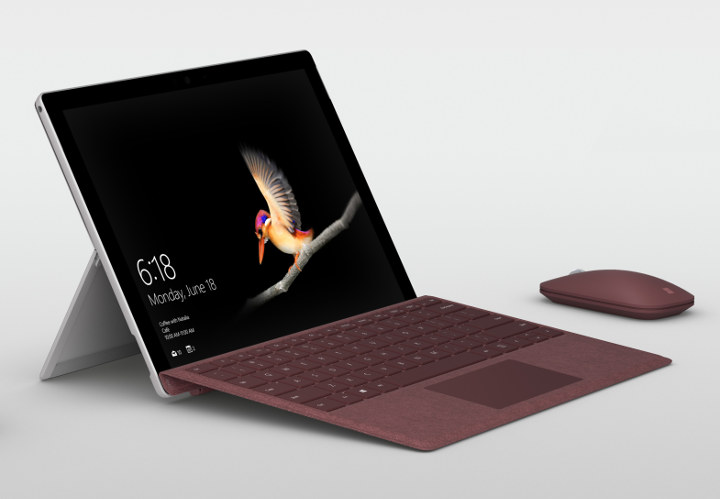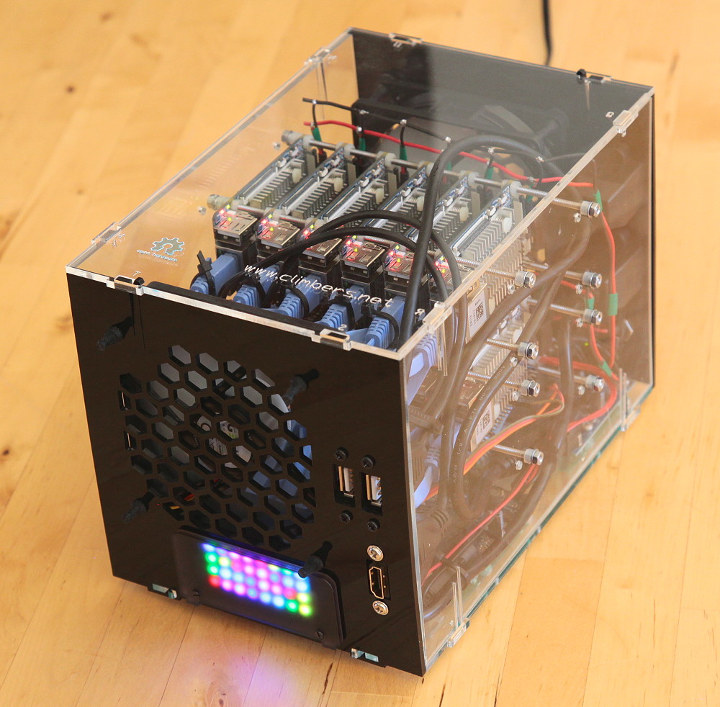When people decided which development board to purchase for their project / use case(s), the often look at the processor, memory, storage, and the external ports, as well as I/Os. However, very few people look at the PMIC (Power Management IC) on the board, as it’s normally an afterthought. Development boards can work without PMIC, instead relying on a single fixed voltage, and for many people that may be good enough, but for more demanding tasks it may lead to either lower performance or overheating issues. Modern processor all rely on DVFS ( Dynamic Voltage and Frequency Scaling) in order to adjust both the voltage and frequency of the processor depending on the load. This is done to optimize power consumption and/or manage the power budget, and overheating may lead to CPU throttling, where the system lowers the frequency and/or operating voltage in order to avoid damaging the processor. I’m […]
A Closer Look at NVIDIA Jetson Xavier Developer Kit (Video)
NVIDIA unveiled Jetson Xavier module and devkit last month, but the company did not release the full information, and for example we did not get any clear photo of the module and kit. Charbax did shot a video with more details at the time, but NVIDIA has now published more information about their upcoming $1,299 Jetson Xavier Developer Kit, including an introduction video which I’ll embed at the end of this article. The first thing to understand is that the module is not actually used in the developer kit, and will only used in actual mass-produced products. The main difference is the thermal solition. The development kit including a large heatsink, while the production module has a thermally conductive plate to let product designer select the most suitable thermal solution for their products. The specifications are still basically the same. For Jetson Xavier (production) module: SoC – NVIDIA Jetson Xavier […]
NetBSD ARM64 Images Now Available with SMP for Raspberry Pi 3, Some NanoPi Boards, and Pine64 Boards
NetBSD on Arm started in 2014 with the release of version 7.0, and last year device tree support was implemented and tested on some Allwinner H3 boards. But apparently, so far NetBSD only supported 32-bit Arm, with initial support for 64-bit Arm (ARM64) committed last April, but good progress has been made, and NetBSD ARM64 bootable firmware images are now available with SMP (multi-core) support. Eight different NetBSD ARM64 images can be downloaded: Generic NetBSD 64-bit image for Raspberry Pi 3 and NVIDIA Tegra X1 Two images for FriendlyELEC boards namely NanoPi NEO2 and NEO Plus2 boards Five images for the following Pine64 boards and hardware platforms Pine A64/A64+ Pine A64-LTS / Sopine with baseboard Pine H64 Pinebook laptop ROCK64 (ROCK64Pro not yet supported) The supported hardware matrix shows most features are supported, but there are still a few things missing such as GPU, crypto and MIPI CSI on all […]
This Soldering Pen Board with Audio Jack Supports Weller RT Tips
The 3.5mm audio jack may be slowly disappearing from new mobile phones, but I’ve recently discovered they were also used in some soldering irons such as the upcoming TS80 USB soldering iron succeeding TS100 model. I initially thought it was a custom design from the maker of TSxxx soldering irons, but this morning I’ve come across the “RT Soldering Pen” board which also features a 3.5mm (audio) jack and can be used to make your own soldering iron by 3D printing your own enclosure, adding some power source, and inserting one of the many Weller RT tips available into the jack. RT soldering pen board specifications: MCU – STMicro STM32F031 Arm Cortex-M0 micro-controller Display – 0.91″ OLED display with 128×32 resolution Compatible with all Weller RT tips with 3.5mm jack. Set-point temperature – 20°C – 400°C with about +/-5°C accuracy (calibration is planed) Maximum measurable temperature – 500°C Heating speed […]
Flashing Firmware to Rockchip Devices in Linux with rkdeveloptool Open Source Utility
It’s been possible to flash firmware to Rockchip devices in Linux with upgrade_tool command line tool for many years, but the utility is closed-source and only supports “RK Firmware” files that are also used for OTA firmware updates, but not “raw firmware” that you’d flash directly to micro SD cards for example. This week-end as I played with ROC-RK3328-CC board, I encountered some instability issues with micro SD cards, so I instead relied on an eMMC flash module. The only problem was that Firefly Team only releases “raw firmware” files, so I was unable to use upgrade_tool, and instead found out rkdeveloptool open source utility was used to flash raw firmware images in Firefly’s Wiki. The first step is to connect a male to male USB Type A cable (like that one on eBay) between the board and the host computer, and connect a USB power adapter to the board. […]
SySTOR (Micro) SD Card Duplicators Can Handle Up to 200 SD Cards
So this week-end, I started to play with ROC-RK3328-CC (Renegade) board that I received from T-Chip / Firefly-Team and as always, I used Etcher to flash the firmware images to micro SD cards. Once flashing is complete, you’ll get a screen mentioning Etcher Pro, a standalone hardware solution allowing to duplicate the content of one micro SD card to 16 other cards. That’s very interesting if you need to duplicate many cards for a project, but the only problem is that the device is not available just yet. So I thought such equipment must already exist and indeed, a company called SySTOR offers such systems able to duplicate one (micro) SD card to up to 199 other (micro) SD cards. Some of the specifications & key features of the system: Processor – Multi-core processor System Memory – 256 MB DDR3 Capacity – Various models from 4 to 200 micro SD […]
Microsoft Surface Go Tablet Based on Intel Pentium Gold 4415Y Processor to Sell for $399 and Up
Microsoft Surface devices are powerful but usually expensive ($2,000+) tablets and laptops, but the company has now launched an entry-level model called Surface Go, powered by an Intel Kaby Lake Pentium processor with 4 to 8GB RAM, 64 to 256 GB storage, and a 10″ high resolution display, and selling for $399 and up. Microsoft Surface Go specifications: SoC – Intel Pentium Gold 4415Y dual core/four thread Kaby Lake-Y processor @ up to 1.6 GHz (base frequency), with 24EU Intel HD Graphics 615 @ 300 / 850 MHz; 6W TDP System Memory – 4 or 8GB LPDDR3-1866 Storage – 64GB eMMC flash, 128GB or 256GB SSD, micro SD card slot Display – 10″ 1800×1200 PixelSense display; 3:2 aspect ratio; built-in kickstand with full friction hinge that extends to 165 degrees Cameras – 8MP Rear camera, 5MP Front-facing camera with Windows Hello facial recognition Audio – 3.5mm headphone jack Connectivity – […]
96-Core NanoPi Fire3 Boards Cluster is a DIY Portable Solution to Teach or Develop Distributed Software
Nick Smith has been messing around with clusters made of Arm boards for several years starting with Raspberry Pi boards, including a 5-node RPI 3 cluster, before moving to other boards like Orange Pi 2E, Pine A64+, or NanoPC-T3. His latest design is based on twelve NanoPi Fire3 boards with 8 cores each, bringing the total number of cores to 96. The platform may not be really useful for actual HPC applications due to limited power and memory, but can still be relied upon for education and development, especially it’s easily portable. Nick also made some interesting points and discoveries. It’s pretty with shiny blinking LEDs, and what looks like proper cooling, and the cluster can deliver 60,000 MFLOPS with Linpack which places it in the top 250 faster computers in the world! That’s provided we travel back in time to year 2000 through 🙂 By today’s standard, it would […]

